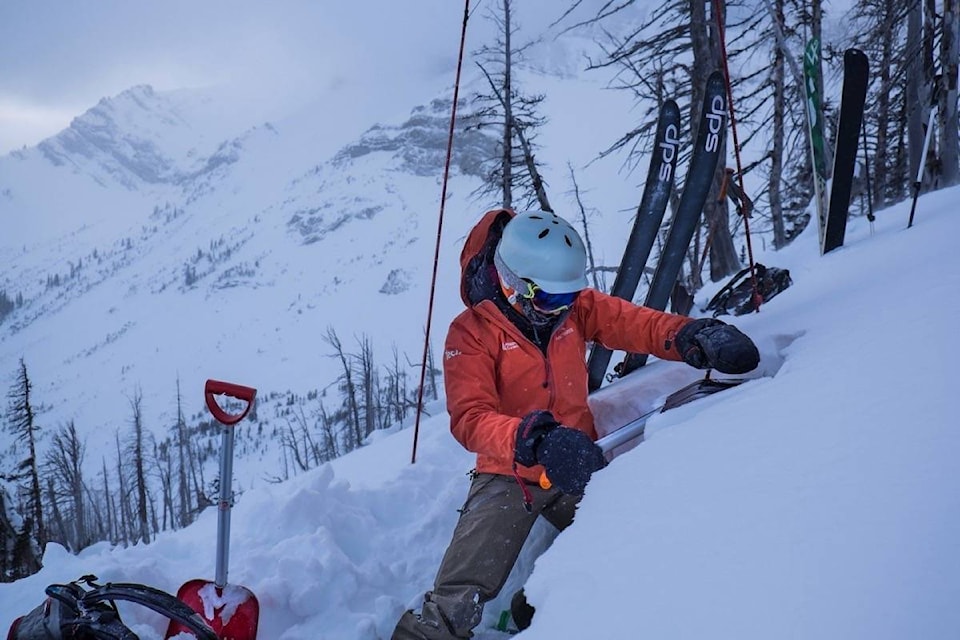Incoming warm weather has caught the attention of Avalanche Canada’s forecasters, who say that this significant jump in temperatures presents a concern in terms of an increase in avalanche danger. On March 3, in partnership with Parks Canada and Kananaskis Country issued a special Avalanche Warning.
“Typically around this time of year it definitely gets warmer and that starts to make some uncertainties about the snowpack because the extra energy and heat it adds can cause avalanche conditions,” said Avalanche Canada forecaster Simon Horton.
The temperatures are already climbing but will really start to jump up Thursday and Friday and get really warm in the Southern Interior.
READ MORE: Avalanche Canada issues special warning for southern Rockies
Avalanche Canada is on heightened alert in all their forecast regions, particularly in the southern Rockies and Lizard-Flathead regions, areas that already have had complex snowpacks and tricky avalanche conditions for the past month.
The special avalanche warning applies to:
•North Rockies
•Cariboos
•Jasper National Park
•Banff, Yoho and Kootenay National Parks
•Kananaskis Country
•South Rockies
•Lizard and Flathead
•Waterton Lakes National Park
When snow warms it can add extra stress, particularly deeper into the snowpack and if there are any buried weak layers that can become extra stressed by warming, especially on south facing slopes. That extra stress can cause either a natural avalanche release or make it more sensitive if someone is travelling along that slope.
While warming temperatures can often be accompanied by moderate to heavy precipitation, there isn’t much in the forecast for the region, so Avalanche Canada doesn’t have to worry about that complicating the situation.
March is historically the deadliest month for avalanche fatalities. Horton said this is believed to be caused by both avalanche conditions themselves as well as human behaviour.
There is generally more snow on the ground and snowpack depths are greater in March, so there tends to be more potential layers in the snow as well as more mass for avalanches, so the biggest avalanches typically happen around this time of year.
The increased warming also creates more stress on the snow but it also can have an influence on human behaviour.
“People might let their guards down or underestimate the risk when it feels warm and less wintery out in the mountains,” Horton said.
There is also a distinction between conditions in March and those found later into the springtime, when the snowpack is fully warmed up and melting.
“In those springtime conditions it’s actually quite predictable, the danger goes up and down with the temperatures throughout the day,” Horton explained. “However, in March there’s still cold snow on the ground and that cold snow behaves differently and generally less predictably than a true spring snowpack so it’s kind of this transition period between winter and spring where there’s a lot of things at play in the snowpack.”
As always, the organization reminds everyone travelling in the backcountry to take a training course through the Avalanche Canada training program, have the essential gear including shovel, probe and transceiver and to check the forecast for the most up-to-date local conditions.
The warming is a concern to forecasters in all regions, so pay attention and avoid exposure to slopes that are getting direct sunlight and heating up. Horton also said that in the Fernie area in the Lizard-Flathead range, there’s some problem layers in the snowpack that are creating dangerous avalanche conditions in the treeline as well.
“It’s overall trickier to travel and avoid the problems in Fernie so very simple terrain selection is what we’re encouraging in those areas,” he said.
You can find the most current forecasts and conditions at www.avalanche.ca
paul.rodgers@kimberleybulletin
Like us on Facebook and follow us on Twitter
